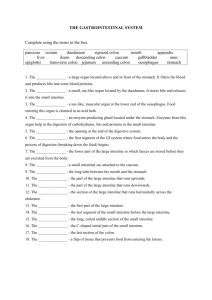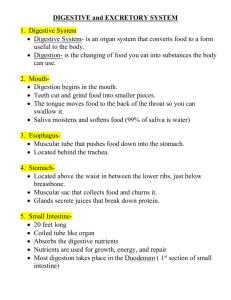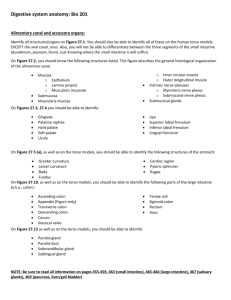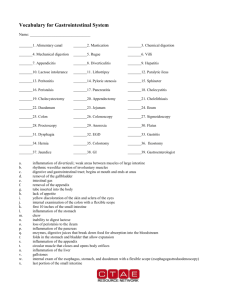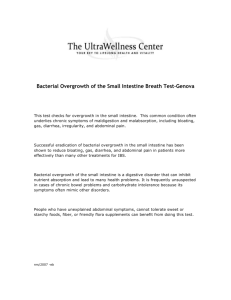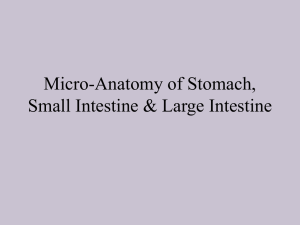Outline the function of the small intestine and large
advertisement
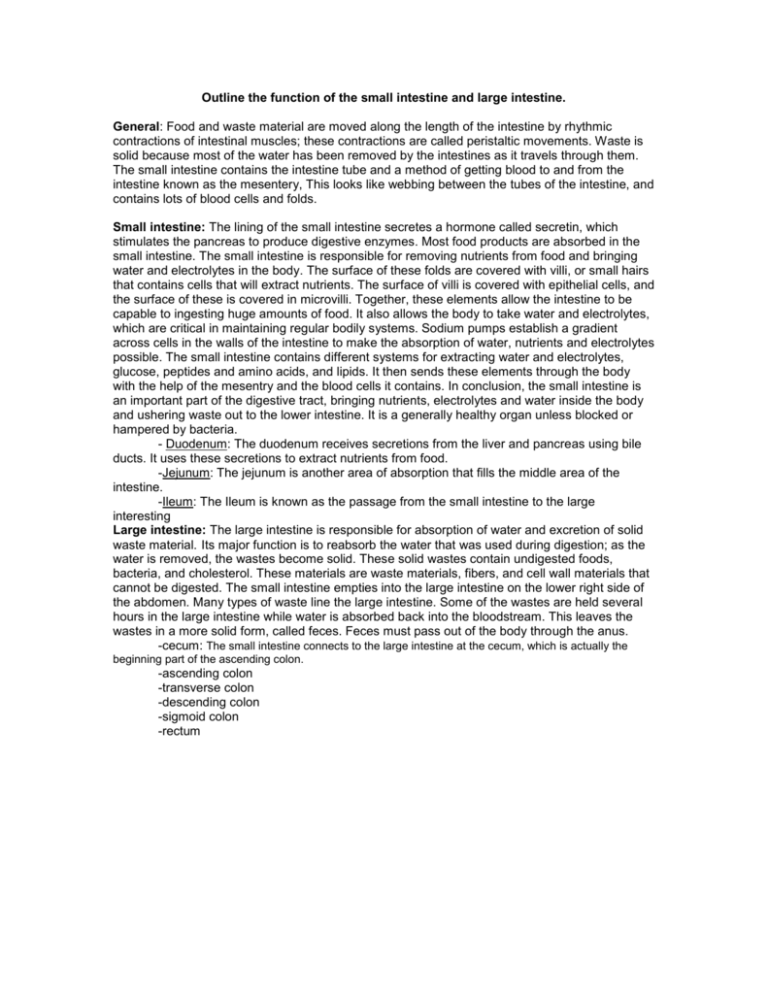
Outline the function of the small intestine and large intestine. General: Food and waste material are moved along the length of the intestine by rhythmic contractions of intestinal muscles; these contractions are called peristaltic movements. Waste is solid because most of the water has been removed by the intestines as it travels through them. The small intestine contains the intestine tube and a method of getting blood to and from the intestine known as the mesentery, This looks like webbing between the tubes of the intestine, and contains lots of blood cells and folds. Small intestine: The lining of the small intestine secretes a hormone called secretin, which stimulates the pancreas to produce digestive enzymes. Most food products are absorbed in the small intestine. The small intestine is responsible for removing nutrients from food and bringing water and electrolytes in the body. The surface of these folds are covered with villi, or small hairs that contains cells that will extract nutrients. The surface of villi is covered with epithelial cells, and the surface of these is covered in microvilli. Together, these elements allow the intestine to be capable to ingesting huge amounts of food. It also allows the body to take water and electrolytes, which are critical in maintaining regular bodily systems. Sodium pumps establish a gradient across cells in the walls of the intestine to make the absorption of water, nutrients and electrolytes possible. The small intestine contains different systems for extracting water and electrolytes, glucose, peptides and amino acids, and lipids. It then sends these elements through the body with the help of the mesentry and the blood cells it contains. In conclusion, the small intestine is an important part of the digestive tract, bringing nutrients, electrolytes and water inside the body and ushering waste out to the lower intestine. It is a generally healthy organ unless blocked or hampered by bacteria. - Duodenum: The duodenum receives secretions from the liver and pancreas using bile ducts. It uses these secretions to extract nutrients from food. -Jejunum: The jejunum is another area of absorption that fills the middle area of the intestine. -Ileum: The Ileum is known as the passage from the small intestine to the large interesting Large intestine: The large intestine is responsible for absorption of water and excretion of solid waste material. Its major function is to reabsorb the water that was used during digestion; as the water is removed, the wastes become solid. These solid wastes contain undigested foods, bacteria, and cholesterol. These materials are waste materials, fibers, and cell wall materials that cannot be digested. The small intestine empties into the large intestine on the lower right side of the abdomen. Many types of waste line the large intestine. Some of the wastes are held several hours in the large intestine while water is absorbed back into the bloodstream. This leaves the wastes in a more solid form, called feces. Feces must pass out of the body through the anus. -cecum: The small intestine connects to the large intestine at the cecum, which is actually the beginning part of the ascending colon. -ascending colon -transverse colon -descending colon -sigmoid colon -rectum

